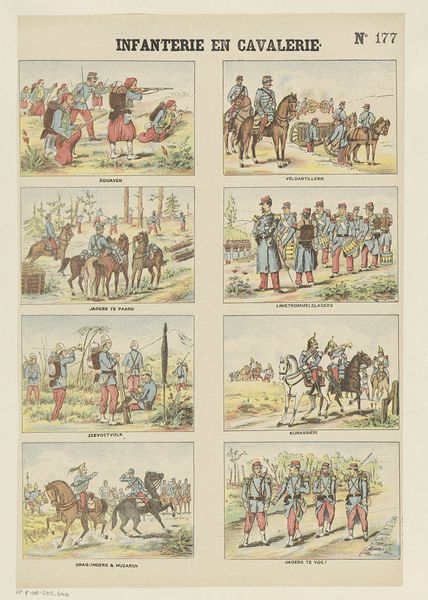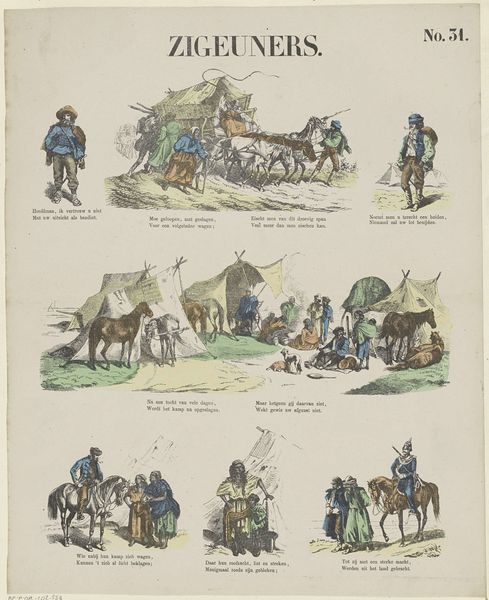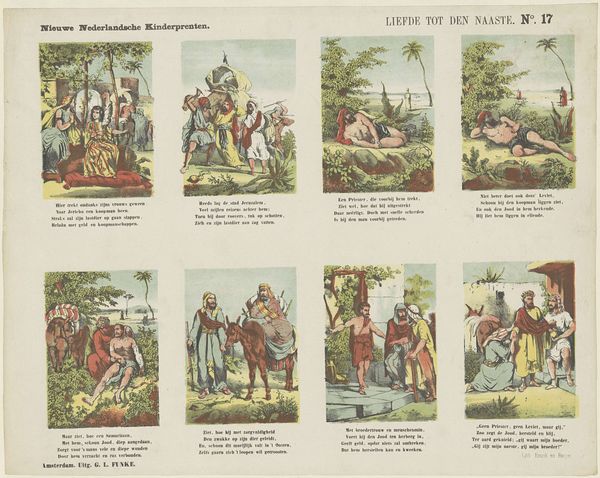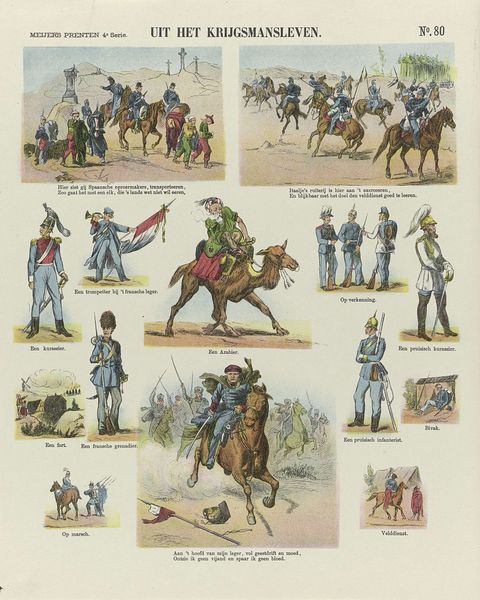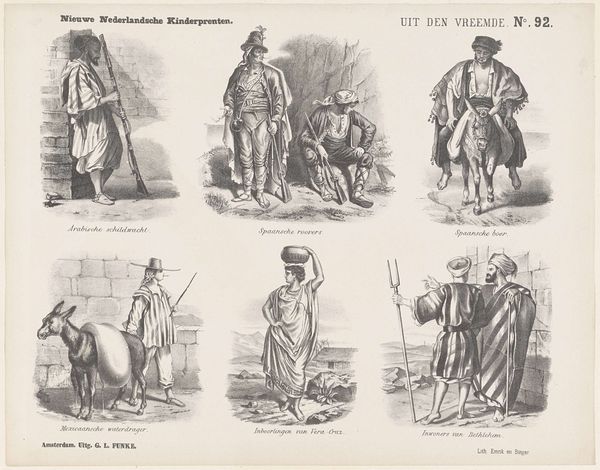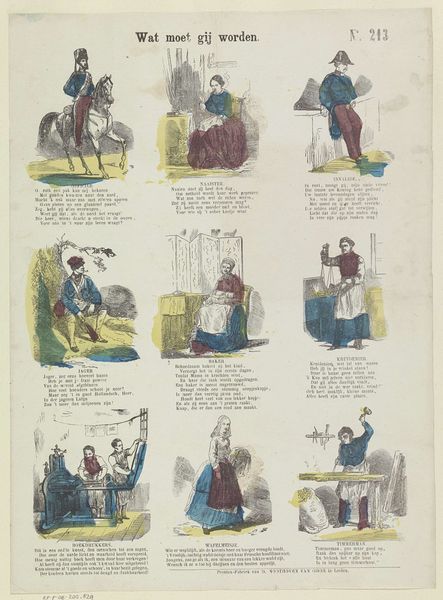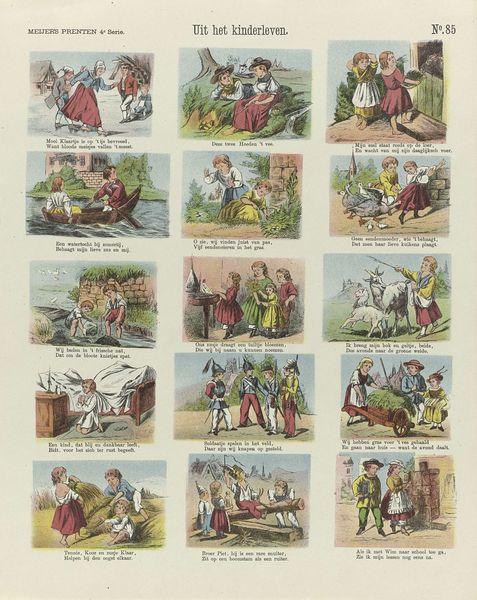
lithograph, print
#
dutch-golden-age
#
lithograph
# print
#
figuration
#
genre-painting
#
history-painting
Dimensions: height 330 mm, width 426 mm
Copyright: Rijks Museum: Open Domain
Curator: This is Soldaten, or Soldiers, Number 25, one from a series called "Nieuwe Nederlandsche Kinderprenten," New Dutch Children’s Prints, created by George Lodewijk Funke around 1865-1875. It is a lithograph. Editor: Okay, immediately, there’s something whimsical about this piece! It feels… almost like a sheet of beautifully rendered stickers? Each soldier, and their groupings, are so self-contained. A tableau of possible lives. Curator: That impression speaks to the context of the series as educational tools for children. It simplifies complex aspects of military life. It offers an idealized snapshot more than any comprehensive understanding of military realities of the era. The use of printmaking suggests affordability, aimed towards wide circulation and popular appeal, making these scenes accessible learning moments within a burgeoning sense of Dutch national identity. Editor: Accessibility yes, also aspiration! Look at the vibrancy of the uniforms. I feel that each carefully considered pose whispers of adventure and of discipline and valor, of course. Though viewed now, the whole lithograph has a removed sensibility, it’s kind of fascinating to consider the emotional engagement it may have promoted in its time. A mix of admiration with caution, perhaps? Curator: Exactly. There's a tension at play in Dutch collective memory of the time: national pride and sober realism. The choice of depicting them in the lithographic form also speaks volumes; it’s meant for instruction and national visibility. The figures, by Funke's composition, turn them into objects of cultural conversation. Editor: You know, despite the distancing effect of history and the medium, I can’t help but think of the children that it's actually speaking to now; children who see conflict portrayed much differently now. This would almost feel foreign. Curator: Precisely, it presents a compelling contrast! An aesthetic approach is essential to considering its initial objectives, as a piece meant to portray duty and perhaps heroism—while also presenting insight into shifts in art consumption and attitudes toward the military. Editor: I think seeing this as an archive of feeling too—that tension you mentioned—the balance between caution, aspiration and reality really adds layers to the scene overall, wouldn't you agree?
Comments
No comments
Be the first to comment and join the conversation on the ultimate creative platform.
